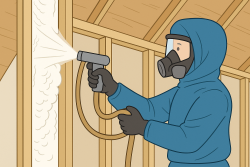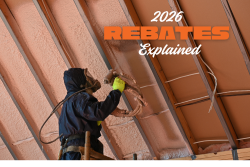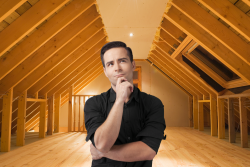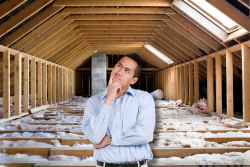If your home lacks the proper amount of insulation, you could have poor energy efficiency. Most of the time there is a good chance that your home is not insulated enough. This is usually due to the building codes that are always changing. Unfortunately, many home builders install only the bare minimum of insulation required in order to save money.
Are you considering making your home more energy-efficient and comfortable?
You can keep your house more comfortable by replacing or upgrading your insulation to current building codes. This will keep it warmer in winter and cooler in summer.
If you’re unsure if your home is uninsulated, we created this blog with these things to look for:
High Energy Bills
If you noticed a huge spike in your energy bills, this is a sign that your home is not energy efficient. One of the biggest culprits is usually air leakage throughout your home. Conditioned air can be leaking out through your attic, crawl space, walls and other areas in your home. Poor insulation will also affect the mechanicals running in your home causing heat loss.
Fluctuating Temperatures
A home with even temperatures is a sign of good insulation. There is a noticeable difference in temperature between rooms of your house. For example, if you freeze in the kitchen, yet feel too hot in the living room - this is an obvious sign that your house is under-insulated.
Drafty Rooms
Although your house may be airtight, there may be a feeling of draftiness. Sometimes this might not be a draft coming in and you may be experiencing a poorly insulated building envelope. Some people can experience the sensation of a draft when their body heat is trying to warm up an external wall.
Cold Rooms
Have you ever noticed some rooms in your home are consistently colder or warmer than other rooms? There is probably poor insulation in those rooms if they are well ventilated. Rooms above the garage and below the attic are often the main culprit. To prevent this, you should ensure that your home is properly insulated throughout. Without insulation, heat and cool air can escape almost anywhere.
Cold Floors
The floor, and the rest of the room, can become unbearably cold if the room is located above an unheated garage. Insufficient insulation can cause this. If the area below the floor is unfinished, you can quickly fix the problem by insulating the floor from below. It will greatly improve the comfort of the room.
A Snowy Roof With Melted Spots.
Next time it snows, go outside and take a look at your house. If you can see areas on your roof that have melted, that's a red flag.
A melted area indicates heat loss through a leak in the roof, a heat source, or other poorly insulated areas. Ice and snow can cause condensation in your attic which will leak down into your insulation, causing it to compress and causing mould damage.
Your Roof is Covered in Icicles
Icicles are a sign of heat loss. This is called ice damming which means that the heat loss from your home is melting the snow on your roof. Snow melts and runs off the roof, causing the roofline to freeze. Those large pieces of ice can cause extensive damage to aluminum and soffit: they can be so heavy that they can even tear an eavestrough right off. Ice buildup can also cause water to leak into your house.
Where Does The Warm Air Go?
- The attic and roof allow about 25% of a home's heat to escape
- It is possible for a house to lose 35% of its heat through the walls
- 25% of a home's heat is lost through windows
- Any gaps in insulation will allow heat to escape
Home insulation affects energy and comfort three times more than windows or doors.
We think you may be interested in these related articles:
Taking advantage of the Greener Homes Grant will increase your savings
Does Spray Foam Insulation Reduce Energy Consumption?
Choose Reitzel Insulation to Help
We manage every aspect of the installation process from beginning to end. We comply with specifications established by the manufacturer and follow established codes. We offer a 5-year workmanship warranty.
To get in touch with Reitzel and book a free in-home assessment.
Call us today at 1-800-265-8869.

















